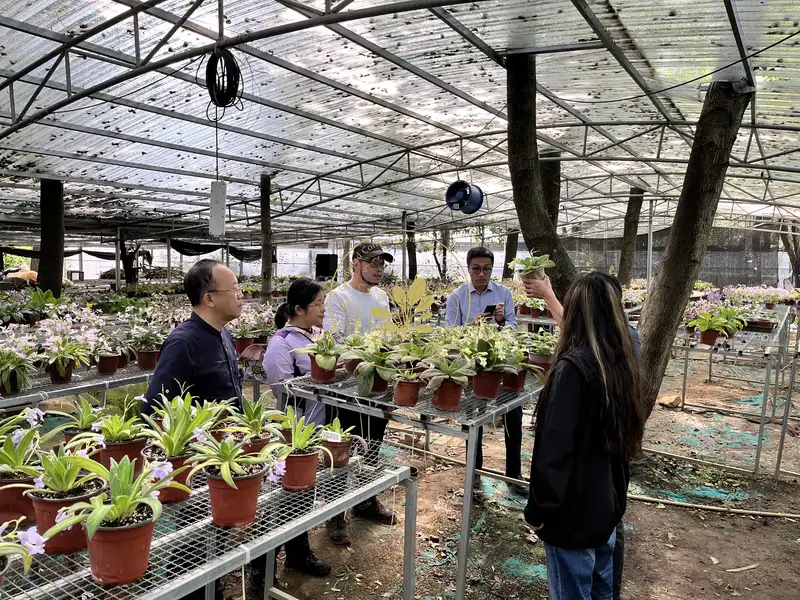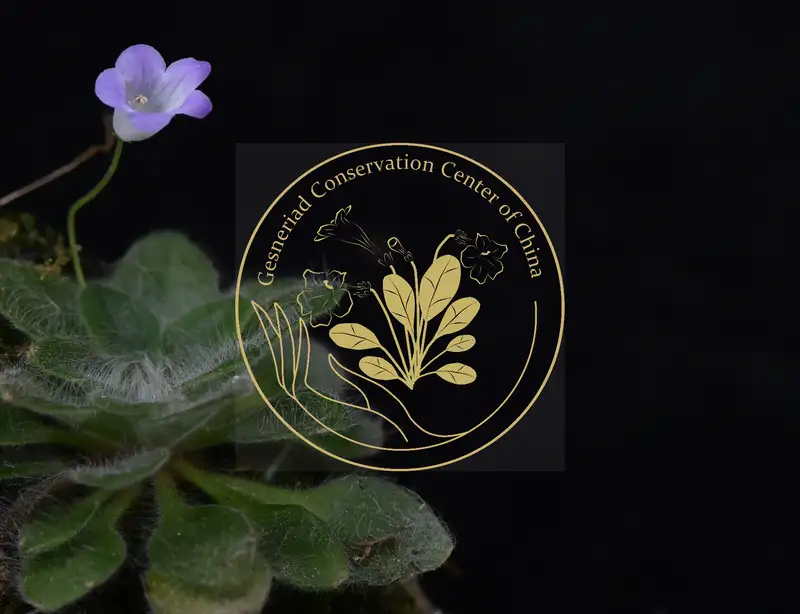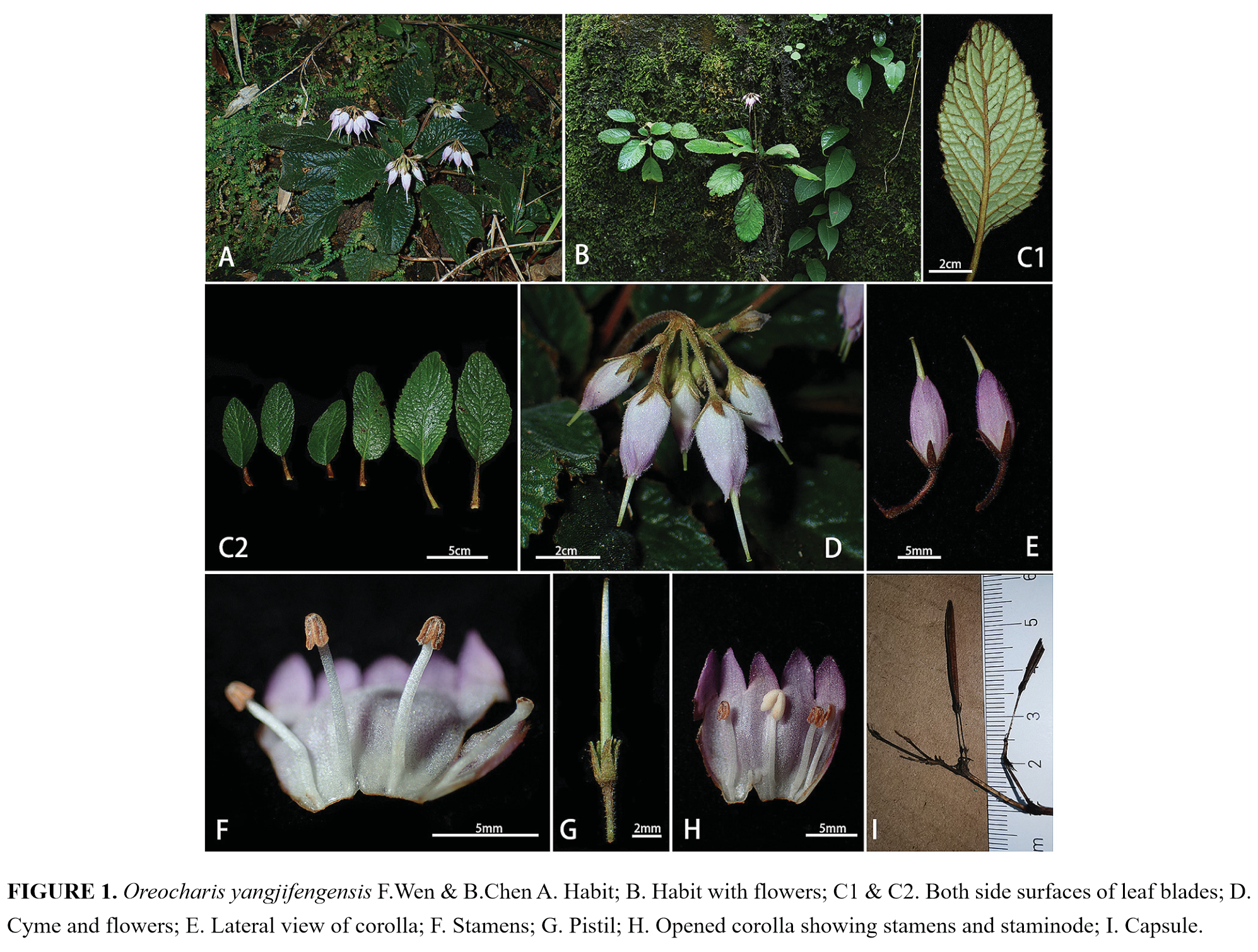No. 2 XUN-LIN YU, MING LI, JIAN-JUN ZHOU & PENG-WEI LI
Petrocodon
hunanensis (Gesneriaceae), a new species
identified by bothmorphological and
molecular evidence from limestone area in
Phytotaxa195(1):65—72.
ABSTRACT
Petrocodon
hunanensis, a new species of Gesneriaceae
from limestone area in
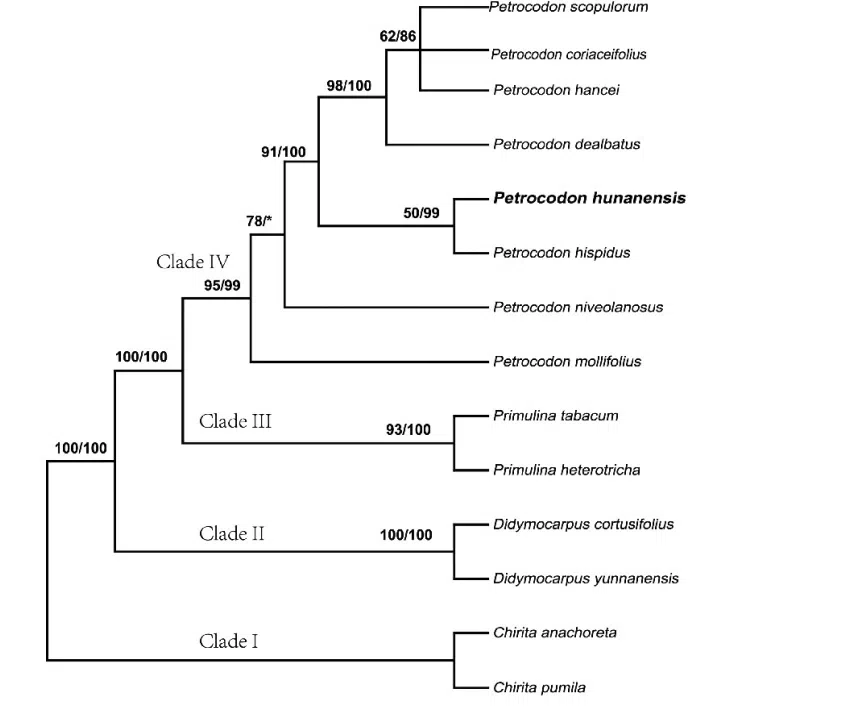
FIGURE 1. One of eight most parsimonious trees generated from analysis of combined ITS andtrnL-Fdata for all sampled taxa.Bootstrap (BS) values are on the left side of the slash and Bayesian posterior probabilities (PP) on the right. The asterisk indicates no support. The bold indicates the new species, Petrocodon hunanensis X. L. Yu & Ming Li(Cited from Yu et al.,2015).
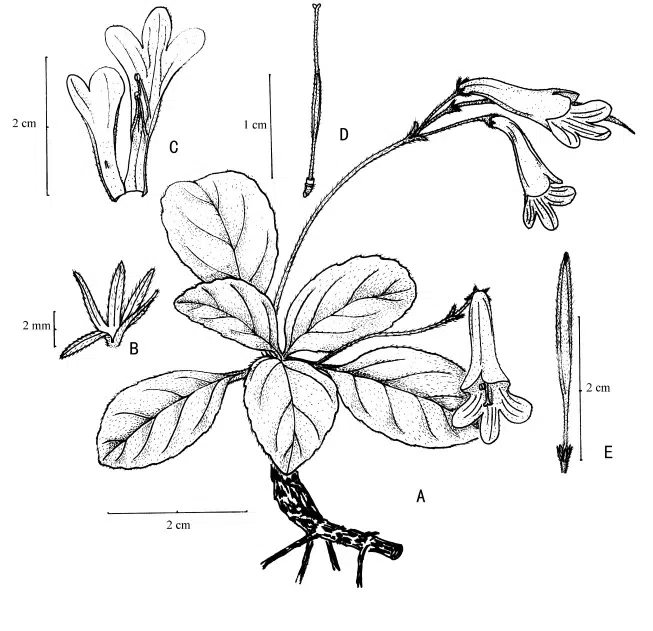
FIGURE 2. Petrocodon hunanensisX. L. Yu & Ming Li,sp. nov.(Drawn by Jing Tian): (A) plant with flowers, (B) calyx, (C) openedcorolla showing stamens and staminodes, (D) pistil, (E) capsule(Cited from Yu et al.,2015)
.
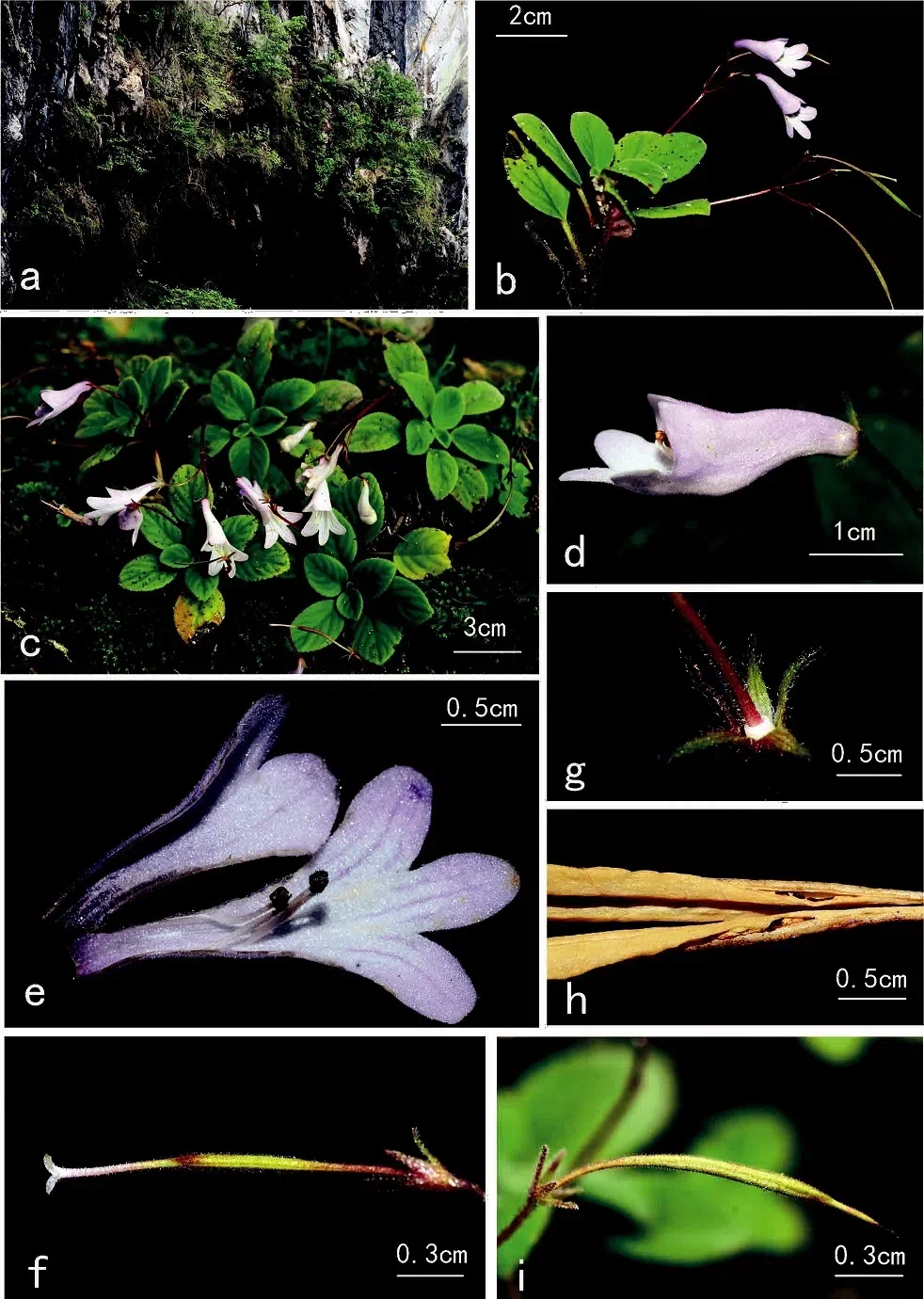
FIGURE 3. Petrocodon hunanensisX. L. Yu & Ming Li,sp. nov.: (a) habitat, (b) and (c) mature plant in the wild, (d) lateral view offlower, (e) opened corolla showing stamens and staminodes, (f) pistil, (g) calyx and disc, (h) seed, (i) young fruit(Cited from Yu et al.,2015).



